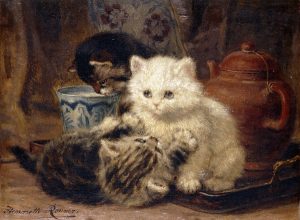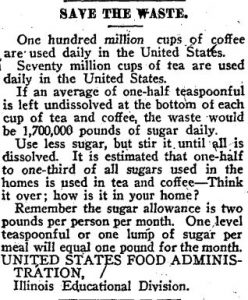January is National Tea Month, but there is a tea for every season. Too hot? Iced tea. Feeling chilly? Warm up with a chai! What comes to mind when you hear the word tea? A warm, calming brew sipped at the end of a long day? A strongly steeped morning pick-me-up? A well-traveled, world-renowned part of your pantry? England? China? India? Nepal?

The Oxford English Dictionary contains over eight definitions for the word tea, ranging from its description as a plant to its use as a noun describing a British afternoon hour. Its current English pronunciation is traced back to approximately 1655, yet it may be historically traced in China as far back as the third century BCE. Centuries of existence and integration into cultures ascribes the fact that in some places it is known as tea whereas in other places it’s known as cha. This informative article by Quartz traces the fascinating etymology of the word. You may further investigate maps located within the UIUC Library, either as an individual item or within monographs, to further trace its place within different cultures. Within the United States, tea dates back to the pre-Revolutionary era, and makes a central appearance in the historical flash point of the Boston Tea Party and the subsequent boycott of the item by the Patriots. From then to now, however, tea has remained a staple of many American households. According to the Tea Association of the U.S.A., citizens consumed over 3.8 billion gallons of tea in 2016!

Due to the longevity of its existence and role within different histories and cultures, tea proves itself an interdisciplinary subject that may find a place in any field of study. There are few categories of tea, which comes from the shrub from the Camellia sinensis plant, which is native to China, northern India, and southeastern Asia. Categories such as black tea, green tea, or oolong, are differentiated by the manufacturing process of the plant. Although there are few categories, there are thousands of varieties of the beverage, which is what arises from blending the plant with various herbs or spices. Celestial Seasonings™ provides a detailed explanation on the characteristics of different categories of tea. From these different categories, there are thousands of varieties available, which has allowed tea to maintain its marketable status. Simply put, there is a tea for just about anyone and for any occasion.
If this post has inspired you to dust off the tea set and heat up the kettle, or if you would just like to read one or more of the many histories of tea, please consult the further resources below.
Further resources:
A person could dedicate an entire scholarly career researching tea, and indeed, some have. The University of Illinois at Urbana-Champaign contains multiple articles, books, and electronic media pertaining to the subject. Conduct a subject search using terms such as “tea–history” or “tea — cultivation.” Use easy search to locate scholarly articles pertaining to scientific properties of tea, or other articles of interest. Below are a few links to items in the local collection you may find enjoyable.
- Consult online reference resources such as Gale Virtual Reference Library or Credo Reference. Use recommended search terms listed above.
- Assam directory and tea areas handbook
- [Tea and coffee. 1, 4] [electronic resource], 1652-1808.
- Everything but the coffee : learning about America from Starbucks
- Robert Fortune : the tea thief
Cited in this post:
- “Tea.” Merriam-Webster.com. Accessed January 23, 2018. https://www.merriam-webster.com/dictionary/tea.
- “tea, n.”. OED Online. January 2018. Oxford University Press. http://www.oed.com/view/Entry/198340?rskey=srli3E&result=1&isAdvanced=false (accessed January 23, 2018).
- www.theteahousetimes.com
- http://www.teausa.com/